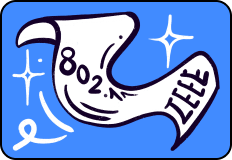The biography of the brain: A century of understanding our mind
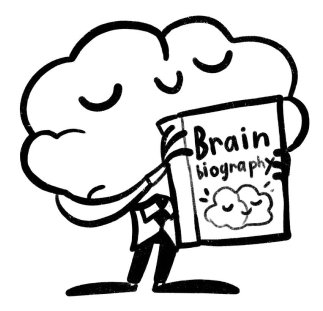
“Since the brain is indeed a machine, our job is the same as with any other machine: to take it apart and see what its parts can do, both separately and in unison.”
“To be or not to be?” Most of us are familiar with this poignant question from the classics. Hamlet’s speech to Yorick’s skull would prove perfectly reasonable, a rather emblematic, explicable scene.
By the 17th century, European thinkers grew increasingly convinced that Shakespeare’s conundrum was definitely one that existed “in the head,” or rather – “in the brain”. Indeed, the brain is the main tool human beings have at their disposal, as a reservoir of feelings and reason. However, this hasn’t always been the case.
Long ago, people considered the brain a completely useless organ of the human body, while nasal mucus was believed to be brain fluid leaking out. Over the past 50 years, the pursuit to learn more about the brain has become a veritable “scientific attraction.”
In the 1970s, when people had never heard of the internet, neuroscientists began actively studying how our brain works. They discovered that the organ not only controls our habits and emotions but also features neuroplasticity – the ability to change in response to experiences and learning.
In the 1980s, scientists came up with another discovery: it turned out that our brain is more than just a collection of neurons – it’s a full-blown “social network.” Neuronal connections can form and strengthen through communication and interaction. You could say that our brain is constantly “liking” new ideas and helping us “subscribe” to new knowledge.
The 1990s ushered in new technologies into our world, as neuroimaging began to open up doors to the mysterious world of the brain. Scientists started witnessing the way different areas of the brain activate while various tasks are being performed. This emerged as a true neurobiology “blockbuster”: “Dear viewers, are you ready to see how your brain lights up while you’re working on puzzles?”
In the 2000s, neuroscience achieved new heights with gene therapy and bioengineering. Scientists went from merely getting to study neurons to gaining the ability to actually influence the way they worked, opening up avenues for treating such diseases as Alzheimer’s and Parkinson’s.
Almost every laboratory now has mind-blowing capabilities at its disposal. They can now render a rat’s brain transparent and observe the functioning of its nerve cells, or put a living person in a scanner and track the activity of individual areas of the brain in real time. Engineers and mathematicians are making such headway that a method for recording electric potentials from the scalp – electroencephalography, which first came onto the scene all the way back in the early 20th century – is now allowing us to control computers using the power of thought.
The practical benefits of a great deal of brain research are becoming increasingly palpable. Nevertheless, scientists have yet to reach a consensus regarding whether we control the brain or it is the brain that controls us. Perhaps the information you derive from this article will allow you to draw your own conclusion about that.
It turns out our brain is like a sponge.
Six hundred million years before our brain came into existence, 18 types of cells would combine to create a sea sponge. Interestingly, these cells contained the genes necessary for a brain, even though at that time the sponge itself didn’t yet have any neurons.
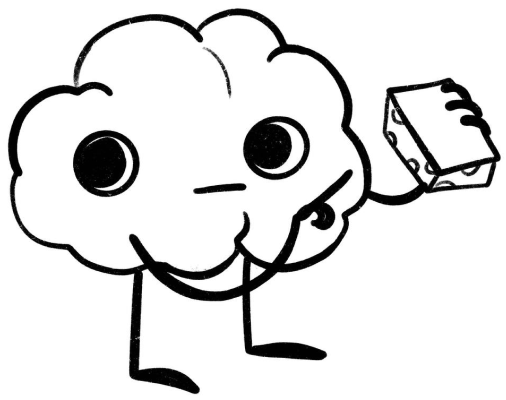
These immobile creatures engaged in filtering microorganisms from the water had more in common with plants, but it was their ingenious simplicity that concealed the greatest step in evolution: for billions of years, single-celled organisms existed alone until the time came for them to combine as multicellular organisms.
This cooperation allowed cells to perform different roles and ensured the survival of the entire organism. The sponge is no lowly cluster of cells – it was the first step toward complex life on Earth!
The ancient Egyptians would dispose of the brain in the process of mummification, deeming it completely useless. Aristotle believed that the brain existed only to cool the blood and played no role in the thinking process. This, however, is only fair to state about some people. Even Charles Darwin didn’t pay this organ proper consideration.
In the mid-20th century, people held to a fascinating idea of the brain’s structure. It was believed that the human brain developed like the rings of a tree, starting with the “reptilian” section, responsible for basic functions like balance and internal organ regulation. Situated on top of it was the “mammalian” layer, responsible for feelings of hunger and sexual arousal. Finally, the uppermost layer was the cerebral cortex – the region used for thinking and high-level mental functioning that set humans apart from other animals. This concept was known as the “triune brain.”
It turns out that mindfulness has nothing to do with it.
We sometimes don’t even stop to think just how important the human brain is in our lives! Each of the millions of cells has its own role to play, reacting to the actions we take according to its own unique evolutionary script.
So who is it then that’s in charge – is it we controlling our brains or is it controlling us? It’s a mystery!
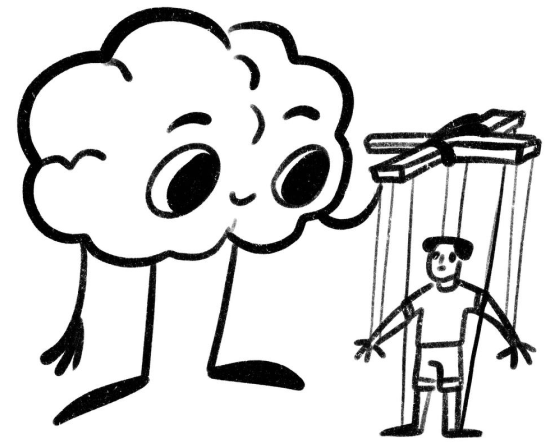
The scientific community has ongoing debates regarding the brain. Some scientists argue that our brain is a puppeteer pulling the strings while we follow its commands. Advocates of a more rational approach provide evidence that the brain is all just “gray matter” and that we make all of our decisions ourselves, based on our life experience, basic strategies, and beliefs.
Some scientists believe that the mind goes beyond biology. Others disagree, arguing that we have two “bosses” in our heads – one emotional and the other rational. One team works information processing wonders on autopilot, sometimes causing us to behave rather oddly while the other carefully calculates every single step, taking so long to do so as if it needs to alternate between information files to work. It’s just the same in real life: like having a fast friend and a slow friend.
It turns out that our consciousness exists separately from us.
Dr. Dirk K. F. Meijer, a professor at the University of Groningen in the Netherlands, is considered the most amusing scientist since the detective and researcher Sherlock Holmes. It has to do with a hypothesis he proposed that consciousness lives within its own field near the brain but exists in some other dimension and, through quantum entanglement, injects ideas into the brain.
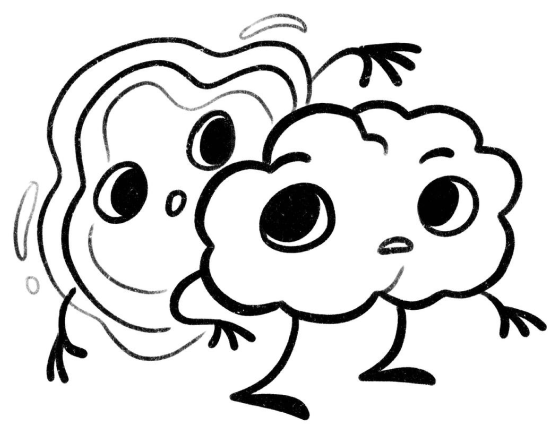
The scientist asserts that consciousness can capture information from anywhere: from the Earth’s magnetic field, dark energy, and possibly even from cosmic strangers. It then sends this wave of information to the brain, where all those neurons begin merrily doing their jobs, processing the data at lightning speed. In other words, the “mind” is a field surrounding the brain; it gathers information from the outside and transmits it to the brain at extremely high speed.
This theory has merit, as the brain indeed has dizzying information processing speed, and not all of its mysteries have been unraveled. Take, for instance, the so-called “binding problem,” where different parts of the brain work on different tasks and then bind themselves together into a unified perception or consciousness, much like stitching together patterns for a future dress. And all of this happens faster than we can explain or track the impulses.
If the “mind” or mental field is capable of interacting with the brain in this way, it could help explain the speed at which mental processes take place. Meijer also used the concept of matter fluctuation, known as the “wave particle” in quantum physics, to explain the connection between the mental field and the brain. The essence of this concept is that particles, such as electrons and photons, exist as waves of probability, but when these probabilities collapse, they manifest as particles.
Consciousness is something far more complex than just the performance of cells in the skull! That said, it’s unsettling sometimes how eager scientists are to try to give a quantum physics explanation for every process that exists.
It turns out that communication through the power of thought is possible after all.
And scientists have managed to demonstrate this. In 2013, researchers from Duke University, led by Miguel Nicolelis (the same person who made a completely paralyzed individual kick a soccer ball at the 2014 World Cup), directly connected the brains of two rats and taught them to communicate over a distance.
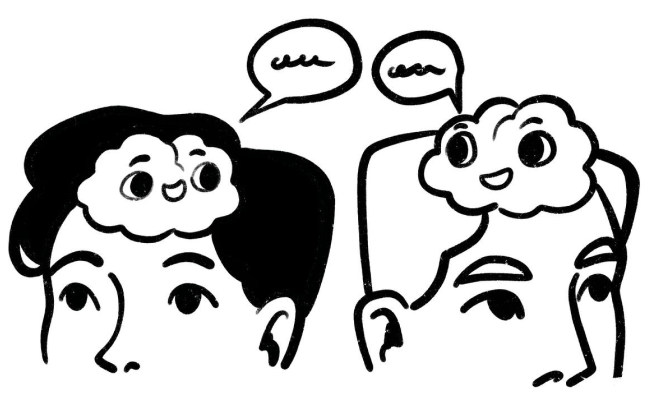
Of course, it wasn’t any kind of profound discussion, but rather about how to solve basic tasks together. The first rat, who the experimenters referred to as the encoder, was trained to press a pedal with a light above it. For each correct press, it received a reward.
The encoder transmitted which pedal to press to the brain of the second rat, the decoder, in the form of electrical impulses. In the second rat’s cage, lights were switched on above both pedals, and it could either make random guesses or use the information transmitted to it from the trained rat. In the overwhelming majority of cases, the decoder rat chose the correct pedal, and both rats received a reward. According to Miguel Nicolelis, his team was the first to demonstrate pure thought-based communication.
This experiment gave way to the idea of connecting the minds of everyone on Earth into a single whole. The result of this was… Can you guess it?
It turns out that the brain needs to meditate.
In ancient times, infants in Japan were given sake to calm them down. This was a common practice in certain regions. However, with the advent of tranquilizers, such methods fell out of favor. One can only imagine the amazing stories these infants could tell if they could speak.
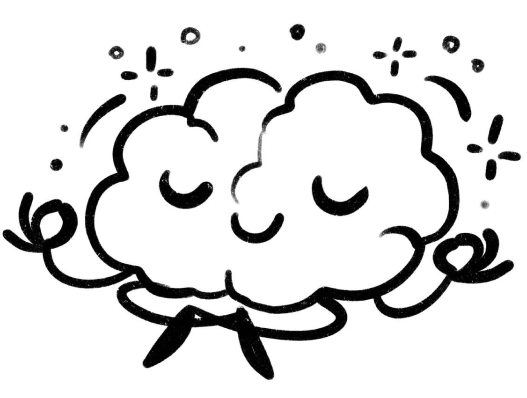
Things changed following the arrival of pharmacology. The brain was introduced to “gentle caresses” – sedatives designed to relieve nervous tension and create a feeling of tranquility, as if being gently rocked on a soft cloud. However, these types of medications still impact the chemical processes in the cerebral cortex and can be addictive. Therefore, people should be very cautious when deciding whether to use them.
In recent years, the focus has shifted to the connection between the brain and our lifestyle. Research shows that physical activity, proper nutrition, and even meditation can enhance brain functioning. And who knows what the future holds? Perhaps soon we will be able to “supercharge” our brains using specialized apps! Wouldn’t that be exciting!
It turns out that the brain is prone to money-grubbing.
Evidence that the brain encodes our information in a special way is supported by the following observation: people often prefer ten dollars today rather than eleven tomorrow. However, if offered ten dollars in a year or eleven dollars in a year and one day, the choice shifts in favor of the larger sum.
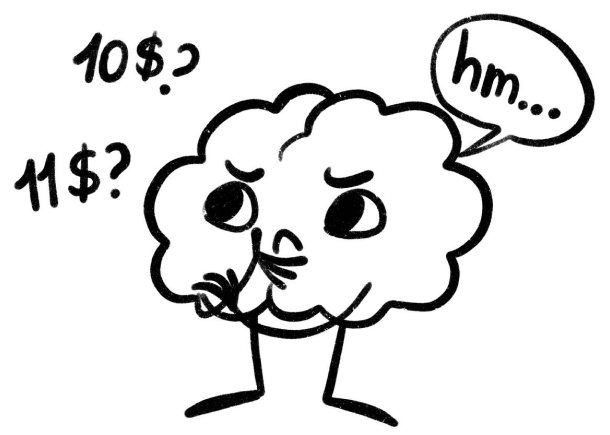
This phenomenon is called temporal discounting – we value immediate rewards more than delayed rewards. This concept has been long since discovered, and anyone who considers themself a marketer is aware of it. However, it has only recently been discovered why this is.
In 2004, Samuel McClure identified two separate systems in the cerebral cortex responsible for making economically rational and emotional decisions. In his study, he asked these same questions to subjects and recorded their brain activity using functional magnetic resonance imaging (fMRI) – a method that assesses activity in particular sections of the brain based on blood flow.
McClure demonstrated that the so-called dorsolateral prefrontal cortex (actually, this is just the region of the brain located right in the forehead area) encodes the value of rewards as “11 is greater than 10”. Meanwhile, the basal ganglia – a cluster of nerve cells deep within the brain – and the orbitofrontal cortex – a region of the brain just above the eyes – encode immediate, emotional outcomes. When the second system wins out, we choose ten dollars today. A common similar behavior is when we overeat instead of stopping while we still have a slight feeling of hunger.
It turns out that the brain can erase memories.
An article published in Nature Neuroscience once discussed how one can alleviate heightened sensitivity to pain. The procedure the experimenters utilized can be likened to the erasure of old memories. The experiment involved inducing mice with increased sensitivity to pain and then making them forget about it, after which their sensitivity returned back to normal.
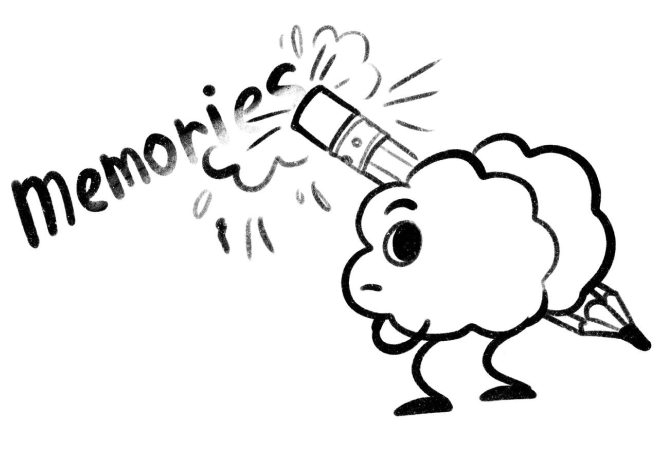
Hyperalgesia, or increased sensitivity to pain, is a highly unpleasant condition where pain is experienced even from minor touches to the skin. You may have encountered hyperalgesia before after experiencing a severe burn. This heightened sensitivity, which is nearly impossible to eliminate, can sometimes persist for years, such as in the facial area with trigeminal neuralgia.
The researchers induced hyperalgesia in the mice by way of capsaicin injections – the main substance that gives chili peppers their heat. Then, after several hours, one group of mice was re-injected with capsaicin, while another group received capsaicin mixed with a substance that suppresses protein synthesis. Thus, pain hypersensitivity in the second group of mice was successfully suppressed.
The authors of the study suggest that the mechanism for pain alleviation resembles that of memory erasure: when mice develop hypersensitivity, neural connections in the spinal cord become reinforced. This is made possible by new receptor proteins being synthesized for mediators which transmit excitation between nerve cells. The more receptors there are, the faster the neuron activates. This process is known as memory consolidation. A similar mechanism comes into play when our short-term memory transforms into long-term memory.
Now for the magic.
At the moment that capsaicin is readministered, this “memory” becomes unstable. To keep it unchanged, new proteins have to be synthesized. If protein synthesis is blocked during the re-administration of capsaicin, the connections responsible for the extreme pain sensations can be weakened, which the authors achieved by blocking protein synthesis. It is believed that in a similar way, our memories can be modified throughout the course of our lives. The mechanisms of reconsolidation are still not fully understood, but a similar approach has proven effective at erasing various painful experiences in mice.
It turns out that the brain is designed to relax.
It’s well-known that the brain is supposed to benefit us, simultaneously harboring knowledge and working on solving tasks we’ve set out to accomplish, but is it really? Scientists have proven that mental activity works only in conjunction with basic needs – food, reproduction, and the desire to be dominant. Without these stimuli, our brain is like a child not getting its sweets!
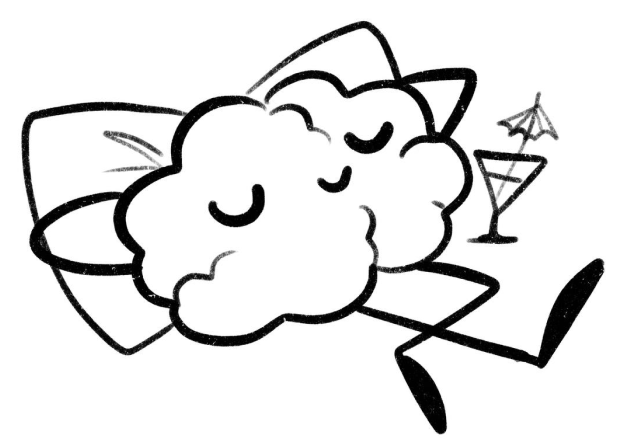
Researchers argue that the brain is designed for lazing about and taking easy gains. Have you noticed this in yourself? You start working on a task, and the brain starts getting frustrated, producing substances that cause irritation, fatigue, and thirst. Somehow, as soon as it’s time to do our taxes, we immediately get hungry, thirsty, and sleepy. When engaged in doing something dull, the brain can even impact the functioning of the gastrointestinal tract! There isn’t a much better way the brain could shout a loud and clear message: “Don’t do this boring thing! Go get free, instant gratification!”
It turns out that the brain can lose weight.
Our brains have been shrinking for the past 3,000 years. Scientists believe that one reason behind this phenomenon is the development of our social systems. The fact of the matter is we’ve created such advanced social structures and systems for exchanging information and knowledge that we can delegate our decision-making to the group level. Being that we can rely on collective intelligence, in that case, why do we need so much brain mass?

Just imagine: you ask a friend about something interesting and complex, like which app to choose for photo editing or what you could make out of two bananas and cherry cider, and instead of one friend, you get answers from ten people. Not bad.
The waist and hips aren’t actually the main fat sources the human body has, but the brain. Up to 80% of its dry weight (excluding water) is made up of fats. For this reason, fatty acids are crucial for brain functioning. When a person eliminates fats from their diet, they doom their brain to low productivity and making more errors.
Small size – big opportunities! Or not so much?
Actually, it turns out things aren’t so cut and dry.
As usual, evolution didn’t invent the wheel from scratch but rather significantly improved existing refinements of the brain. It created new structures and mechanisms out of what was already in place. The beginnings of our “conscious” hemispheres were present in fish, and our central nervous system still retains internal cavities as a small reminder of when it used to be a simple tube – a bit of nostalgia for the golden age!
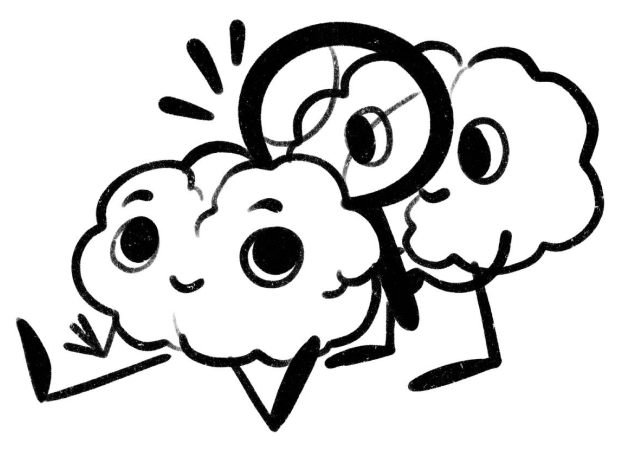
In addition to that, we use nerve cells that seem to have been around since the time before the ancestors of jellyfish and humans diverged. The chemical “language” we use to communicate with each other has partially been inherited from the common ancestors we share with sponges – like a programming language from primitive microdomains!
We eagerly anticipate being able to control exoskeletons with our thoughts and seeing fully paralyzed individuals stand up off of their beds. However, the number of nervous system diseases and behavioral disorders is increasing annually. Currently, about 550 million people worldwide suffer from depression. This alarming figure is climbing year after year, and the significant increase in life expectancy might lead to a frightening prevalence of Alzheimer’s disease.
And, paradoxically, scientists use their brains to study the brain, although based on some experiments that have been done, the brain might be able to study itself. It certainly knows a thing or two about modern life and complex artificial intelligence systems.
Scientists have decoded the human genome. We’ve decoded the genome of interest. Only pure science and facts.
Thank you!




